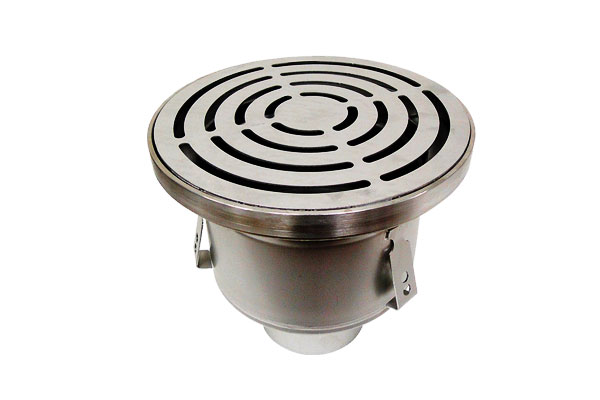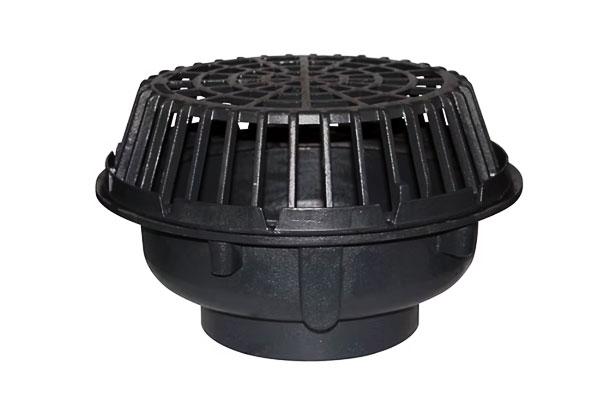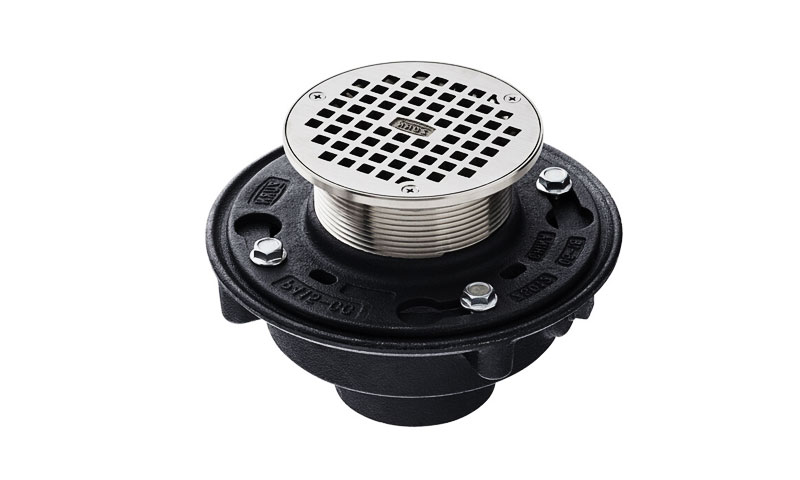1. Введение
Stainless steel casting floor drains combine corrosion resistance, mechanical strength and hygienic surface properties that make them ideal for demanding commercial, industrial and food-processing environments.
Typical cast alloys (CF8/CF8M equivalents of 304/316) offer robust performance in wet, chloride-bearing and chemically aggressive services; specialty castings (дуплекс нержавеющий, cast 316L, or cast alloys with improved machinability) are used where service conditions, loads or regulatory requirements demand it.
Proper grade selection, метод кастинга, surface finish and installation determine long service life and low maintenance.
2. Why Choose Stainless Steel Casting Floor Drains?
Main advantages
- Превосходная коррозионная стойкость vs cast iron or coated steels — especially in chloride, alkaline or chemical washdown environments.
- Гигиена: stainless does not support microbial growth as readily as porous coatings; smooth finishes are easy to sanitize.
- Long life / низкое обслуживание: less frequent replacement, lower risk of rust staining or structural failure.
- Recyclability and appearance: long serviceable life and attractive finish useful in public/commercial spaces.
When stainless is preferred
- Food and beverage processing, commercial kitchens, pharmaceutical and healthcare facilities, marine and coastal installations, химические растения, and anywhere repeated wet cleaning, caustic detergents or salt exposure occurs.
3. Материалы & Grades Used for Cast Stainless Drains
The material selection for stainless-steel casting floor drains is critical for ensuring long-term corrosion resistance, механическая прочность, и гигиена соблюдение требований.
The choice of grade depends on Сервисная среда, химическая экспозиция, механическая нагрузка, fabrication requirements, и соображения стоимости.
Бросать нержавеющие стали are preferred over wrought products in many cases due to the ability to produce complex shapes with integrated features such as traps, сито, and sloped surfaces.

Common Cast Stainless-Steel Grades
Cast stainless-steel grades are generally specified to ASTM A351 стандарты. Below are the most frequently used alloys:
| Cast Designation | UNS номер | Совместимый эквивалент | Ключевые функции | Типичные приложения |
| CF8 | S30400 | 304 | Аустенитный; Отличная общая коррозионная стойкость; Хорошая механическая прочность; экономичный | Indoor floor drains, general-purpose sanitary drains |
| CF8M | S31600 | 316 | Austenitic with 2–3% Mo; superior pitting and crevice corrosion resistance | Coastal, морской пехотинец, chemical plant, and food-processing drains |
| CF3 / CF3M | 304Л / 316L эквивалент | Low-carbon versions of CF8 / CF8M | Улучшенная свариваемость и снижение риска сенсибилизации. | Welded installations, areas with onsite fabrication |
| Duplex Cast | S31803 / S32205 | Дуплексная нержавеющая сталь | Mixed austenite–ferrite microstructure; Высокая сила; excellent chloride resistance | Heavy-duty, химический, или высокие хлоридные среды; exterior or coastal installations |
| Special Machinable Castings | Варьируется (Ni–Cu alloys, machinable CF8M) | - | Alloyed for enhanced machinability; may have slightly lower corrosion resistance | Customized or precision drains requiring post-cast machining |
4. Casting processes and post-cast finishing

Common casting routes
- Инвестиции (Потерянный восков) кастинг: yields excellent dimensional accuracy, мелкие детали (узкие щели), and good surface finish — preferred for architectural/drain grates and precision trap bodies.
- Оболочка / resin-bonded sand casting: cost-effective for moderate complexity parts with good finish; commonly used for housings and larger drain bodies.
- Green-sand casting: economical for large simple parts; may require more machining and finishing.
Post-cast operations
- Термическая обработка / Решение отжиг: relieves stresses and restores corrosion resistance after welding; recommended for many cast austenitics. Typical practice: solution anneal and quench per material spec.
- Обработка and slot formation: drain slots, flange faces and trap interfaces machined to tolerance.
- Поверхностная отделка: шлифование, атласная отделка, Bead Blast, электрополирование. Surface roughness targets depend on hygiene requirements (see Section 7).
- Пассивация: химическая пассивация (азотная или лимонная кислота) removes free iron and enhances the passive film; often specified after welding or fabrication.
5. Механический & hydraulic design considerations
Load classes and structural strength
Floor drains must match expected loadings — pedestrian, light vehicle, or heavy-traffic.
For access covers and grates, many regions use В 124 load classes as a reference (globally recognized):
- A15 — up to 1.5 Т (pedestrian, bicycles)
- B125 — up to 12.5 Т (car parks)
- C250, D400, E600, F900 — progressively larger loads (trucks, heavy industrial).
Guideline: choose drain tops/grates and seatings manufactured and certified to the appropriate load class.
For floor drains integrated into traffic areas, a cast duplex or thick CF8M grate may be required.
Гидравлическая способность & grate design
- Slot area & free area: free area is the total open area through the grate; hydraulic capacity is directly proportional to free area for a given head.
Narrow slot designs (for safety/footwear) reduce capacity and increase clog risk. - Typical practice: ensure free area matches expected peak inflow (washdown or storm runoff) with margin; refer to local plumbing codes for sanitary or storm flow rates.
- Debris handling: incorporate trap baskets or removable strainers to collect solids and facilitate maintenance.
Trap seals and backflow prevention
- Internal traps prevent sewer gas entry. Where drains may be subject to backflow, consider backwater valves or floor check valves.
For high hygiene facilities, trap designs that are easy to remove and clean are preferred.
6. Коррозия, Носить, and Contamination
Pitting and crevice corrosion — why 316 often wins
When chlorides or aggressive ions are present, the passivity of stainless steels can break down and localized corrosion (ячечка / расщелина) может произойти.
A quantitative index commonly used is Древесина (Эквивалентное число сопротивления ячеек).
Approximate PREN examples (типичный):
- 304 (CF8): Cr ≈ 18, Mo ≈ 0 → PREN ≈ 18
- 316 (CF8M): Cr ≈ 17–18, Mo ≈ 2–3 → PREN ≈ 26 (грубо)
Higher PREN = better resistance to pitting / Коррозия расщелины. When drains are exposed to seawater, chlorine or brines, CF8M (бросать 316) is commonly recommended.
Galvanic contacts & покрытия
Avoid mixing stainless drains with less noble metals (цинк, алюминий, углеродистая сталь) in electrical contact where stray currents or wet conditions exist, unless insulated; galvanic couples can accelerate corrosion of the less noble metal and cause staining.
Erosion and mechanical wear
High-velocity washdown (НАПРИМЕР., Уборка высокого давления) can erode drain slots and edges over time — robust castings or hardened inserts mitigate wear. Duplex castings provide higher strength and wear resistance.
7. Hygienic and cleanability aspects
Surface finish targets
- General commercial: brushed/satin finishes often acceptable (Ra ≈ 0.8 µm or 32 µin).
- Еда & фармацевтический: smoother surfaces are desirable (Ra ≤ 0.4–0.8 µm).
Electropolishing can reduce Ra to ~0.2–0.4 µm, minimize microcrevices and improve cleanability. - Welds and joints: гладкий, continuous weld profiles facilitate cleaning; post-weld passivation recommended.
Drain geometry and bacterial control
- Avoid dead legs or stagnant pockets in trap bodies and housings. Sloped interior surfaces and smooth transitions promote self-draining and reduce microbial harborage.
Chemical compatibility with cleaners
- Choose drain grade compatible with the facility’s cleaning chemicals (НАПРИМЕР., high-concentration chlorinated bleaches can attack some alloys at elevated temperatures). CF8M resists many common detergents and sanitizers better than CF8.
8. Installation best practices and site considerations

Монтаж & bedding
- Install drains on a true, prepared concrete recess with proper fall to the drain inlet. Bedding mortars should be compatible and should not entrap moisture against the cast body.
Сварка & thermal effects
- If welding to stainless piping or frames, control heat input and consider post-weld solution anneal for CF8/CF8M attachments in critical sanitary applications to avoid sensitization.
Specify CF3/CF3M (низкий) where welding is frequent and sensitization is a concern.
Уплотнения & прокладки
- Use NSF/food-grade gaskets where required. Ensure seals are compatible with cleaning chemicals and temperatures.
Access for maintenance
- Provide adequate clearance and removable grates to access basket and trap for cleaning without disassembling adjacent equipment.
9. Осмотр, maintenance and troubleshooting
Routine checks
- Inspect and remove debris/strainers weekly in high-use areas; monthly checks in lower-use environments.
- Inspect for signs of pitting, обесцвечивание, or weld crevice corrosion and address the cause (химический, механический, or stray current).
Пассивация & уборка
- Periodic passivation (citric or nitric acid based) restores a clean passive layer after mechanical wear or welding. Electropolishing reduces maintenance frequency.
Common failure modes and remedies
- Pitting at slots or crevices: likely chloride exposure + insufficient alloy. Средство: upgrade to CF8M or duplex, improve cleaning and drainage to prevent standing salts.
- Galvanic staining: isolate dissimilar metals or use sacrificial anodes.
- Mechanical damage to grate / деформация: verify load class and consider duplex castings or thicker grates.
10. Расходы, lifecycle and sustainability
Comparative costs
- Upfront cost: stainless castings (CF8/CF8M) typically cost more than cast iron or plastic drains.
- Lifecycle cost: более низкое обслуживание, fewer replacements, less downtime — often results in lower total cost of ownership in corrosive/hygienic environments.
Устойчивость
- Stainless steel is highly recyclable; at end-of-life components are readily recycled into new stainless products. The embodied energy is amortized over long life and reuse.
11. Common Misconceptions About Stainless Steel Casting Floor Drains
“All Stainless Steel Drains Are the Same”
ЛОЖЬ. 304 SS and 316L SS differ drastically in corrosion resistance—316L’s molybdenum content (2.5%) makes it 3x more resistant to chloride-induced pitting.
“Stainless Steel Drains Never Rust”
ЛОЖЬ. 304 SS will pit in high-chloride environments (НАПРИМЕР., Продовольственная обработка, морской пехотинец) — rust-like spots are pitting corrosion, not “rust” (оксид железа).
“Investment Casting Is Too Expensive”
Context-dependent. For high-volume food/medical applications, investment casting eliminates post-machining and reduces maintenance costs—ROI achieved in 2–3 years vs. кастинг песка.
“Load Capacity Doesn’t Matter for Indoor Drains”
ЛОЖЬ. Commercial buildings (НАПРИМЕР., malls) experience heavy pedestrian traffic—under-sized Class A drains can crack, leading to water damage and safety hazards.
“Mechanical Traps Are Better Than Water Seals”
Не всегда. Mechanical traps (flaps, balls) require maintenance (уборка, смазка) and can fail in dusty/industrial environments—water seals are more reliable for low-maintenance applications.
12. Comparison with Floor Drains Made of Other Materials
Selecting the right floor drain material is critical to balancing коррозионная стойкость, механические характеристики, гигиена, Стоимость жизненного цикла, и эстетика.
| Свойство / Особенность | Нержавеющая сталь (304 / 316 / Duplex Cast) | ПВХ / CPVC | Чугун (Grey / Герцоги) | Оцинкованная сталь | Латунь / Бронза |
| Коррозионная стойкость | Отличный; resists pitting, расщелина, and chemical attack | Good in non-chloride water; limited chemical resistance | Умеренный; prone to rust if coating fails | Умеренный; zinc coating degrades over time | Good in potable water and mild corrosive environments |
| Механическая прочность | High tensile/yield; ударный устойчивый | Низкий; brittle under load | High compressive; brittle under impact | Умеренный | Умеренный; Герцоги |
| Гигиена / Чистка | Very hygienic; гладкий, не пористого; electropolishable | Умеренный; smooth but can scratch or trap biofilms | Низкий; rough surfaces trap debris; Требуется покрытия | Умеренный; can corrode and stain | Гладкий; антимикробные свойства; Легко чистить |
Нагревать / Химическая устойчивость |
Высокий; withstands hot water and cleaning chemicals | Ограничен (~60–90°C); chemical resistance varies | Heat resistant; limited chemical resistance | Умеренный; susceptible to chemicals | Умеренный; resistant to mild chemicals and heat |
| Typical Service Life | 25–50+ лет | 10–20 years | 15–25 лет | 10–15 years | 20–30 years |
| Соображения стоимости | Высокая начальная стоимость; low lifecycle cost | Low upfront; higher maintenance over time | Умеренный; coating maintenance needed | Low upfront; frequent maintenance | От умеренного до высокого; specialty or decorative use |
| Типичные приложения | Еда, напиток, фарма, морской пехотинец, hospitals, high-traffic commercial | Жилой, light commercial | Commercial, municipal stormwater, промышленное (non-food) | Industrial or commercial with light moisture/chemicals | Еда, напиток, декоративный |
13. Заключение
Stainless steel cast floor drains are a high-value option where corrosion resistance, hygiene and long life are priorities.
Selecting the right cast alloy (CF8 vs CF8M vs duplex), процесс кастинга, surface finish and mechanical class, combined with correct installation and maintenance, delivers durable, low-maintenance drainage solutions for food, фармацевтический, marine and industrial facilities.
Thoughtful specification and inspection — including grade verification, finish requirements and load classification — prevent common failures such as pitting, galvanic attack and mechanical damage.
Часто задаваемые вопросы
Which stainless grade is best for an outdoor drain on a coastal pier?
Бросать 316 (CF8M) is typically recommended for coastal environments because Mo enhances resistance to pitting from chlorides.
For very aggressive marine service consider cast duplex for higher strength and chloride resistance.
Can I weld a CF8 drain to carbon steel piping?
Да, with appropriate joint design and isolation to prevent galvanic corrosion. Use compatible filler metals and consider insulating flange connections; avoid direct contact without electrical isolation.
How often should drain baskets be cleaned?
High-use kitchens: daily; commercial/retail floor drains: weekly; light-use areas: monthly — adapt frequency to observed debris accumulation.
Is electropolishing necessary?
Не всегда, but electropolishing improves cleanability and reduces microbial adhesion — recommended in food, pharmaceutical and medical environments.
What load class should I specify for a public restroom drain?
Обычно A15 (pedestrian) is adequate for restrooms; if the area may see carts or service vehicles specify B125 or higher as required.


